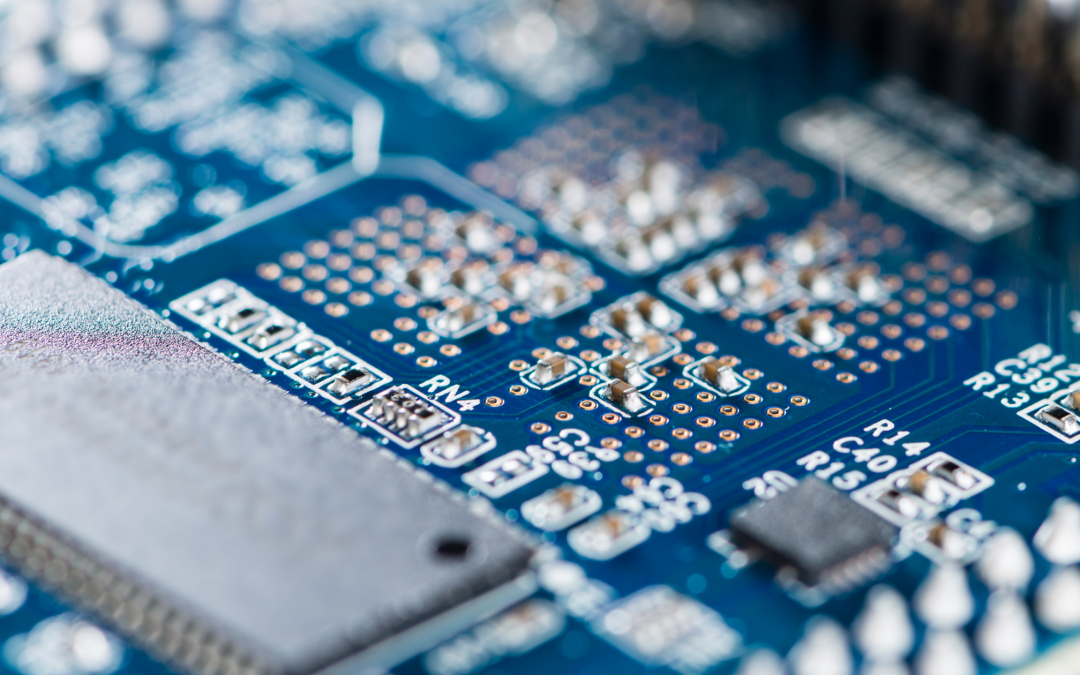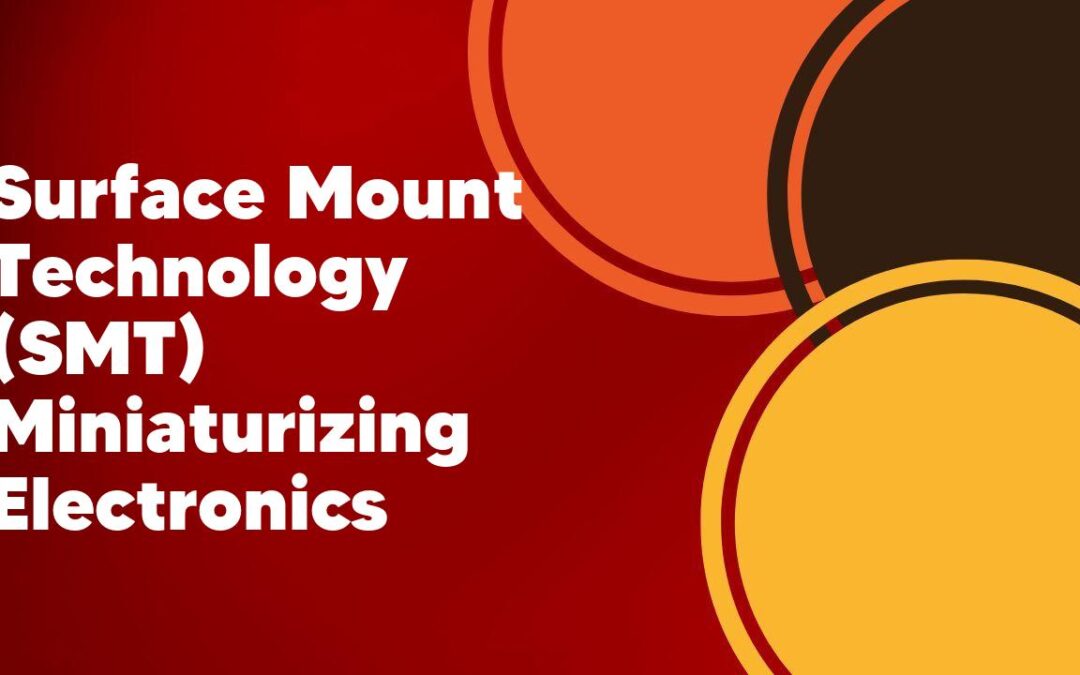Surface Mount Technology (SMT) has revolutionized the way electronics are designed and manufactured. This advanced technique allows for the miniaturization of electronic components, resulting in smaller and more efficient devices. With its numerous benefits and diverse applications, SMT has become a crucial aspect of modern technology.
1. Introduction to Surface Mount Technology (SMT)
Surface Mount Technology (SMT) has revolutionized the electronics manufacturing industry, providing a more efficient and precise method for soldering components onto printed circuit boards (PCBs). As a professional electronic engineer, I have witnessed firsthand the incredible advancements in SMT over the years. This technology has not only reduced costs and improved productivity but also allowed for the creation of smaller and more compact devices. With SMT, electronic components are directly mounted onto the PCBs’ surface, eliminating the need for traditional through-hole soldering. This innovation has opened up new possibilities for designing and manufacturing electronic products, making them more reliable, lightweight, and aesthetically pleasing. SMT has truly transformed the way we envision and create electronics in the modern world.
2. Advantages of Miniaturizing Electronics with SMT

One of the advantages of miniaturizing electronics with surface mount technology (SMT) is the significant reduction in size and weight of electronic devices. With SMT, components can be soldered directly onto the surface of the PCB, eliminating the need for bulky through-hole components and their associated protruding leads. This allows for a much more compact design, making devices not only smaller but also lighter. This is especially beneficial in industries such as consumer electronics, where portability and sleekness are highly valued. Additionally, miniaturization through SMT also allows for increased functionality within a smaller space, as more components can be packed onto the PCB, resulting in improved performance and enhanced features.
3. Challenges and Solutions in Miniaturizing Electronics with SMT
As an engineer working on miniaturizing electronics with surface mount technology (SMT), I have faced several challenges in my career. One of the main challenges is ensuring the proper alignment and placement of small components on circuit boards. The tiny size of the components makes it difficult to handle and place them accurately. To address this issue, I have been using specialized tools and equipment such as magnifying lenses and robotic pick-and-place machines. Another challenge I have encountered is heat dissipation in miniaturized electronics. The small size of the components makes it harder for heat to escape, leading to potential overheating issues. To overcome this, I have been employing advanced thermal management techniques and materials, such as heat sinks and thermal pads, to effectively dissipate heat and prevent any damage to the electronic components. Despite these challenges, the advancements in SMT have revolutionized the electronics industry, allowing for smaller, more efficient, and powerful electronic devices.
4. Applications of Miniaturized Electronics in Various Industries
As a woman working in the field of miniaturized electronics, I have seen firsthand the incredible applications of this technology in various industries. One area where miniaturized electronics have made a significant impact is in the healthcare industry. From wearable devices that monitor heart rate and blood pressure to implantable sensors that track vital signs in real-time, these miniature electronics have revolutionized patient care. Additionally, miniaturized electronics have also found their way into the automotive industry, enabling the development of advanced safety features such as collision avoidance systems and smart dashboards. In the aerospace industry, these electronics have helped create lightweight and efficient components for spacecraft and satellites. It is truly remarkable to witness how miniaturized electronics are reshaping multiple sectors and improving our lives in countless ways.
5. Future Trends in Surface Mount Technology and Miniaturization
In my opinion, the future of surface mount technology and miniaturization looks incredibly promising. With advancements in technology happening at such a rapid pace, we can expect to see even smaller components and more efficient manufacturing processes. One trend that I believe will continue to grow is the use of three-dimensional packaging, which allows for higher component density and improved thermal management. Additionally, we can also anticipate the development of even smaller and more efficient power sources, allowing for increased portability and longer battery life in electronic devices. The demand for smaller, lighter, and more powerful devices is only going to increase, and surface mount technology and miniaturization will play a crucial role in meeting these demands.
6. Conclusion: The Impact of SMT in Advancing Electronics
In conclusion, SMT has had a profound impact on advancing electronics. With its ability to reduce the size and weight of electronic devices, SMT has revolutionized the industry, making portable electronics more compact and efficient. Furthermore, SMT has greatly improved the reliability and durability of electronic devices, as the soldering process ensures secure connections and reduces the risk of loose components. Additionally, SMT has played a significant role in advancing the capabilities of electronic devices, allowing for faster processing speeds and higher memory capacities. Overall, SMT has undoubtedly paved the way for numerous technological advancements and will continue to shape the future of electronics.
Conclusion
Overall, Surface Mount Technology (SMT) has revolutionized the electronics industry by allowing for the miniaturization of electronic components. This technology offers numerous advantages such as increased efficiency, improved performance, and reduced cost of production. As SMT continues to evolve, it is expected to further enhance the capabilities of electronic devices and pave the way for even more compact and powerful technologies in the future.
What is Surface Mount Technology (SMT)?
Surface Mount Technology (SMT) is a method of assembling electronic circuits where the components are mounted directly onto the surface of a printed circuit board (PCB). This technology allows for miniaturization of electronic devices and improved manufacturing efficiency.
How does Surface Mount Technology work?
In SMT, electronic components are made up of tiny packaged units that can be mounted directly onto the surface of a PCB. These components have small metal pins or flat metal contacts that can be soldered onto the pads on the PCB. SMT uses automated equipment to accurately position and solder the components onto the PCB.
What are the advantages of Surface Mount Technology?
SMT offers several advantages over traditional through-hole technology. These include miniaturization of electronic devices, cost-effectiveness, improved quality and reliability, better electrical performance, and increased manufacturing efficiency.
Can Surface Mount Technology be used for all types of electronic components?
SMT can be used for a wide range of electronic components, including resistors, capacitors, diodes, transistors, integrated circuits, and various other surface-mounted devices. However, some larger or specialized components may still require through-hole mounting.
Are there any limitations or challenges with Surface Mount Technology?
While SMT offers many advantages, it does have certain limitations and challenges. For instance, SMT components can be more difficult to repair or replace compared to through-hole components. Additionally, thermal management can be more critical due to the compact size of SMT components.
Is Surface Mount Technology commonly used in electronics manufacturing?
Yes, Surface Mount Technology has become the predominant method of electronic component assembly in modern electronics manufacturing. It is widely used in industries such as consumer electronics, telecommunications, automotive, aerospace, and medical devices.

